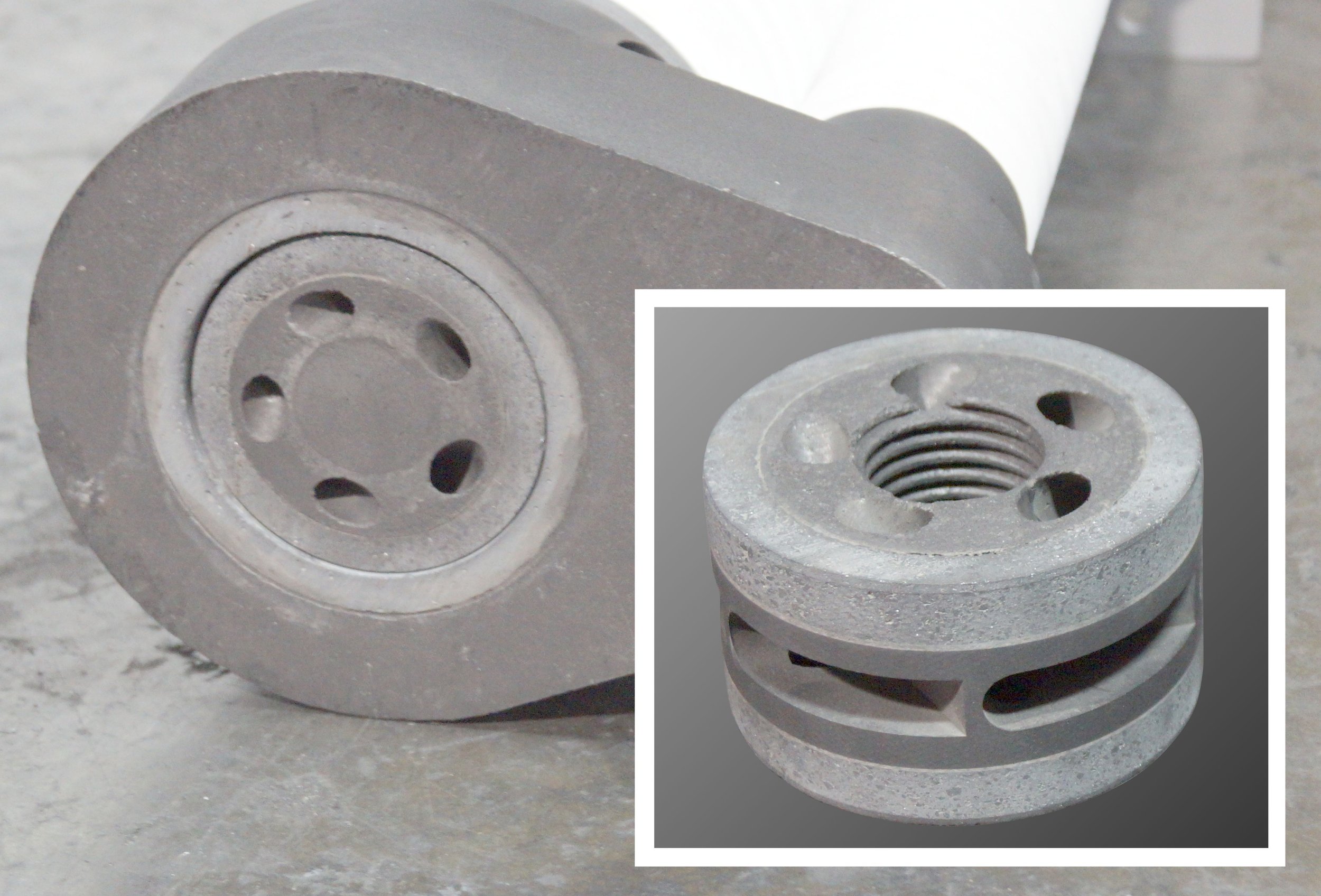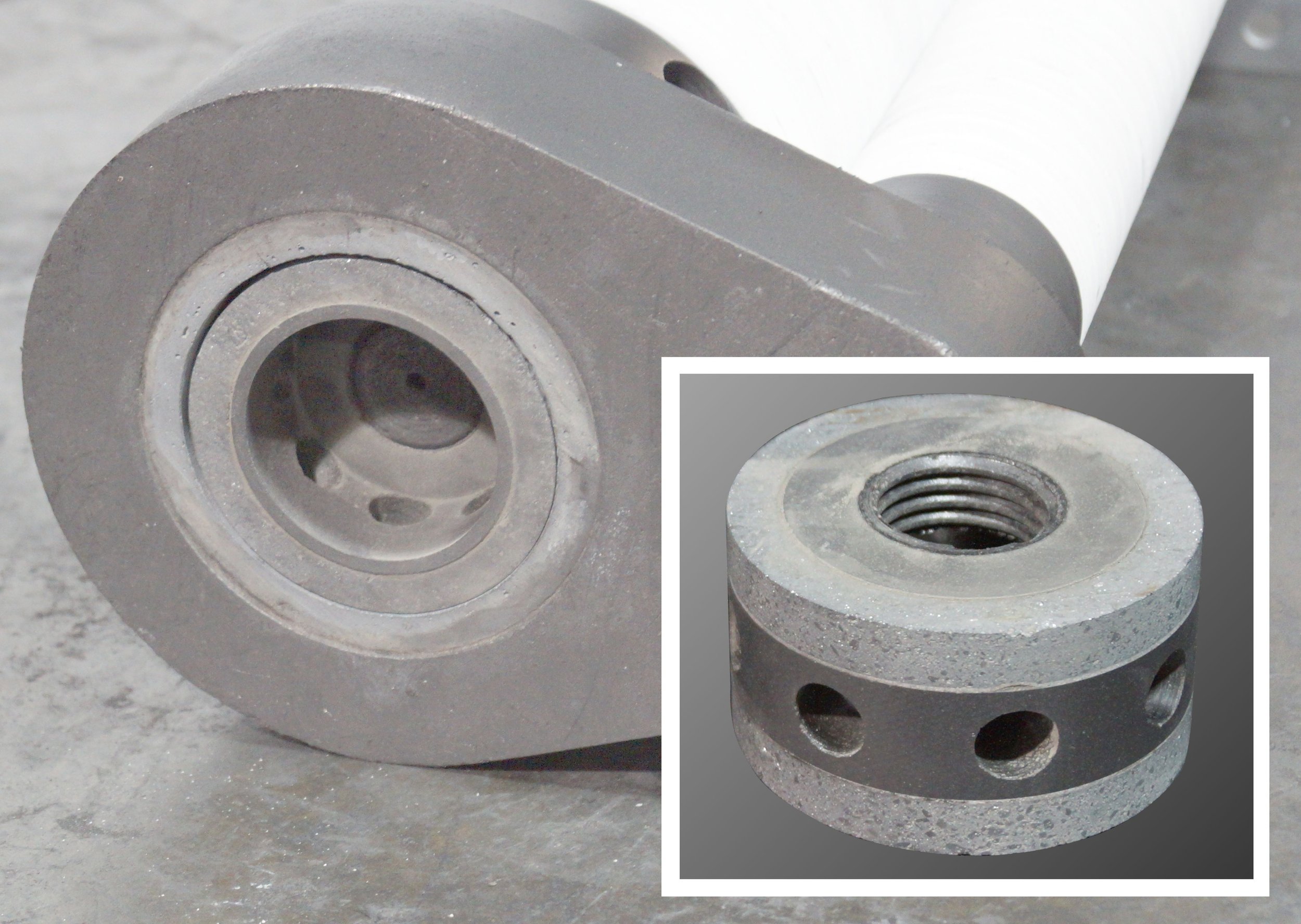Impeller Types and Purposes
Three Main Types of Impellers
We offer three different types of impellers for many of our molten metal pumps. (The impeller is the vaned wheel that spins inside the pump base.) The impeller and its interaction with the pump base (and base volute) largely determine the performance characteristics of a given pump design. Each impeller type has benefits, caveats, and tradeoffs. The three kinds are:
Top Feed Only Impeller
Bottom Feed Only Impeller
Bottom and Top Feed Impeller
Let’s take a look at each impeller type and how it impacts the overall pump and system design. Keep in mind that the pump is one component in a system that includes the furnace characteristics as well as the circulation or transfer route of the molten metal.
Top-Feed Only Impeller
As the name implies, the top-feed only impeller draws material only from the top of the pump base. The primary benefit of this configuration is to avoid drawing “dirty” material from the floor of the pump well. Dirty material refers to melt that is contaminated with heavy suspended solids that may interfere with the pump operation resulting in accelerated pump wear and even pump failure. (Also see Rock Catcher blog post.)The top-feed only impeller is used with both transfer and circulation systems. Melt furnaces that incorporate a broad range of recycled materials often include various types of suspended solids including chunks of dross as well as unmelted aluminum and alloy additives. The use of a top-feed only impeller combined with a Rock Catcher configuration significantly improves pump reliability and lifetimes. In some instances, this configuration is also used during transfer of alloyed material from the melt furnace to the holding furnace.The top-feed only impeller has two main caveats. First, the top-feed only impeller will be less efficient than a top and bottom feed impeller. Also, drawing all material from the top of the base means that the pump is more susceptible to cavitation. Cavitation occurs when air is drawn into the volute. When this happens, compressible air passes through the molten metal passageways and results in a violent oscillation of the impeller within the volute. This oscillation will cause damage to the impeller, shaft, and base of the pump.
Bottom-Feed Only Impeller
The bottom-feed only impeller draws material from the bottom of the base. This impeller is ideal for performing a pump-out of a furnace using a utility pump because it allows the metal level to lower as far as possible before the pump begins to cavitate. This configuration is not suitable for dirty melts or old lining.The bottom-feed only impeller can be configured with a Rock Catcher, for special application in which the metal level in the furnace is routinely lowered for operations like large casting or alloy changes. In this configuration, the Rock Catcher plays a critical role in determining the minimal metal depth to prevent cavitation.
Bottom and Top Feed Impeller
The bottom-top feed impeller provides maximum efficiency and highest volume by drawing material from both the top and the bottom of the pump base. The bottom feed helps keep the pump well clean while to top feed balances out the volume with cleaner material. The bottom-top or BT impeller is ideal for cleaner melts and newly lined furnaces.


